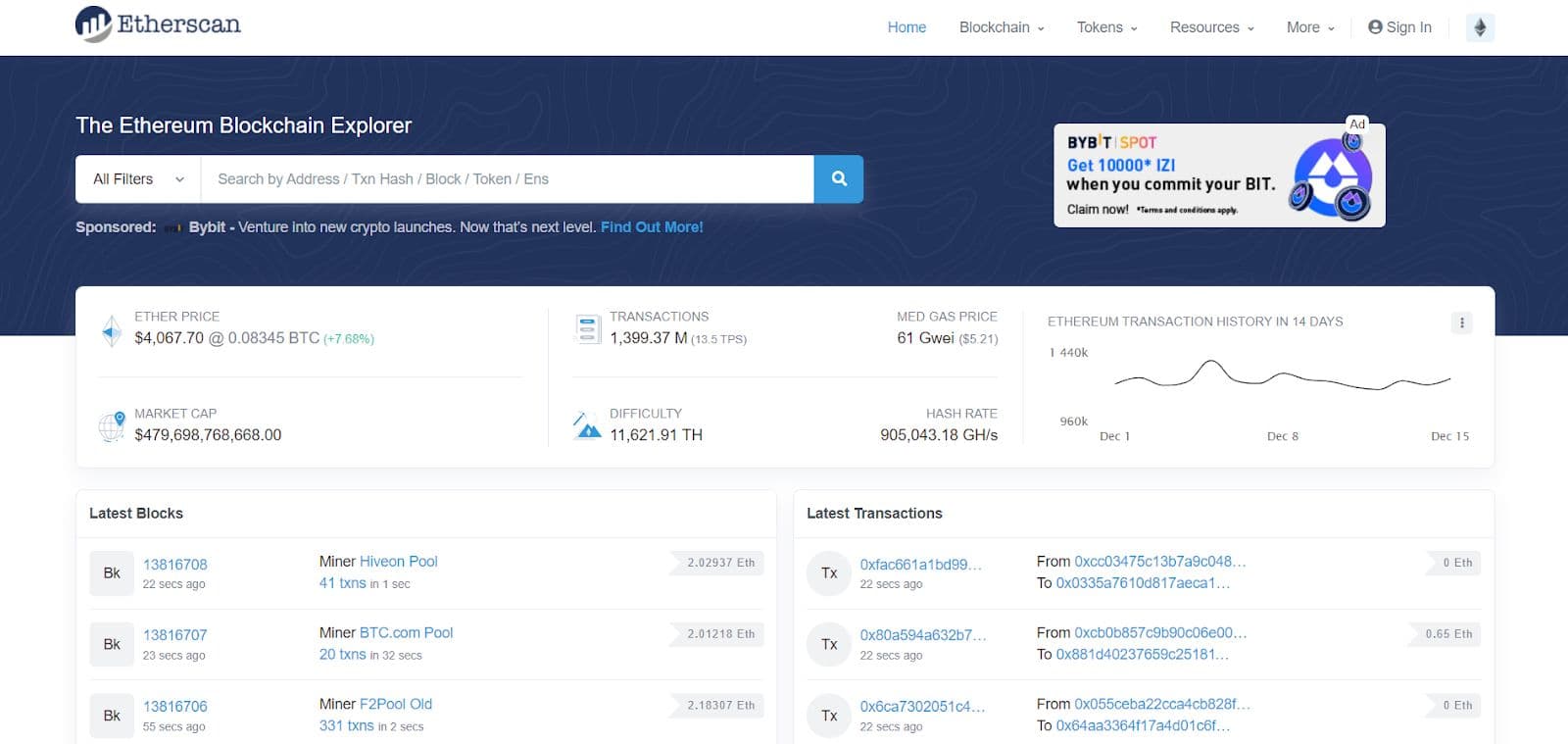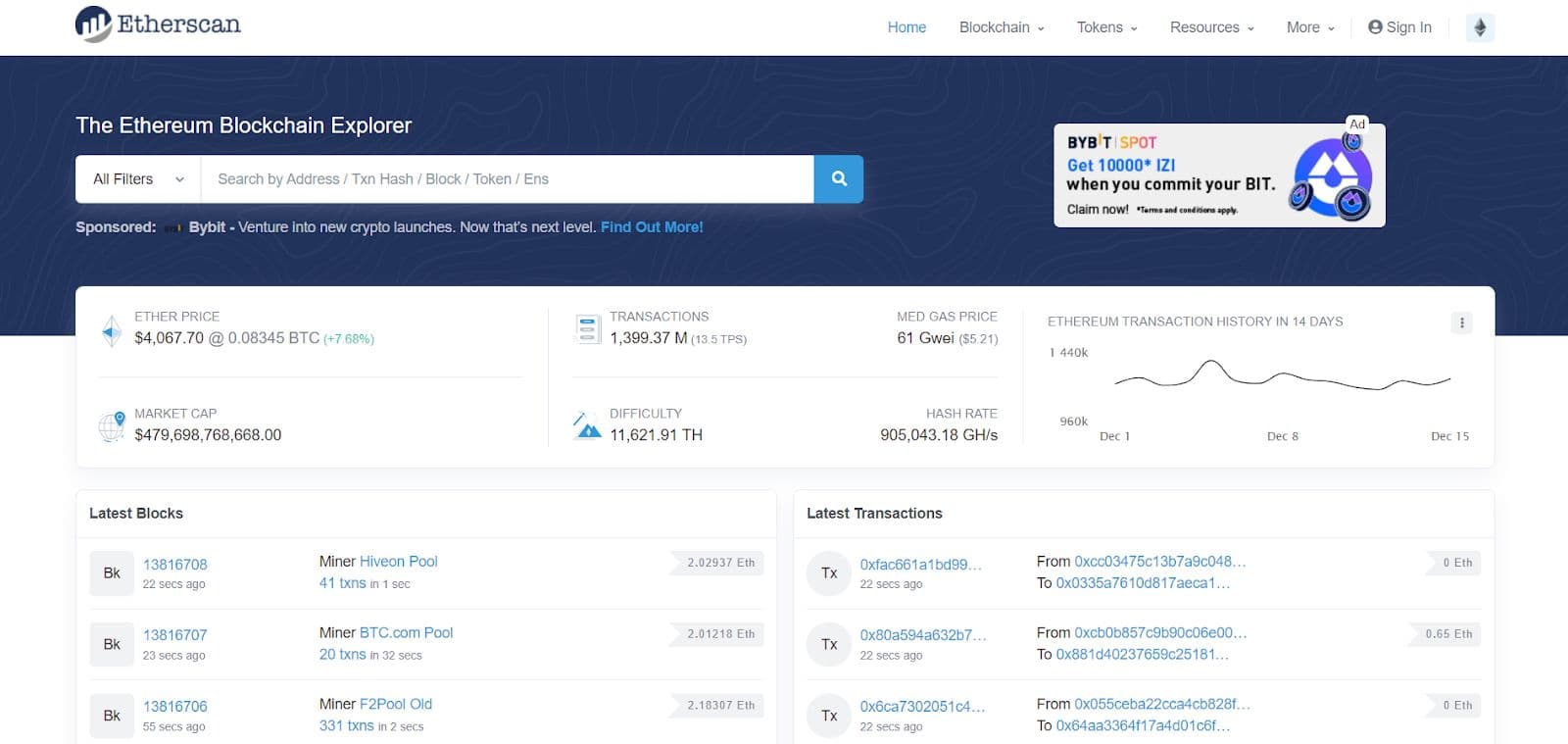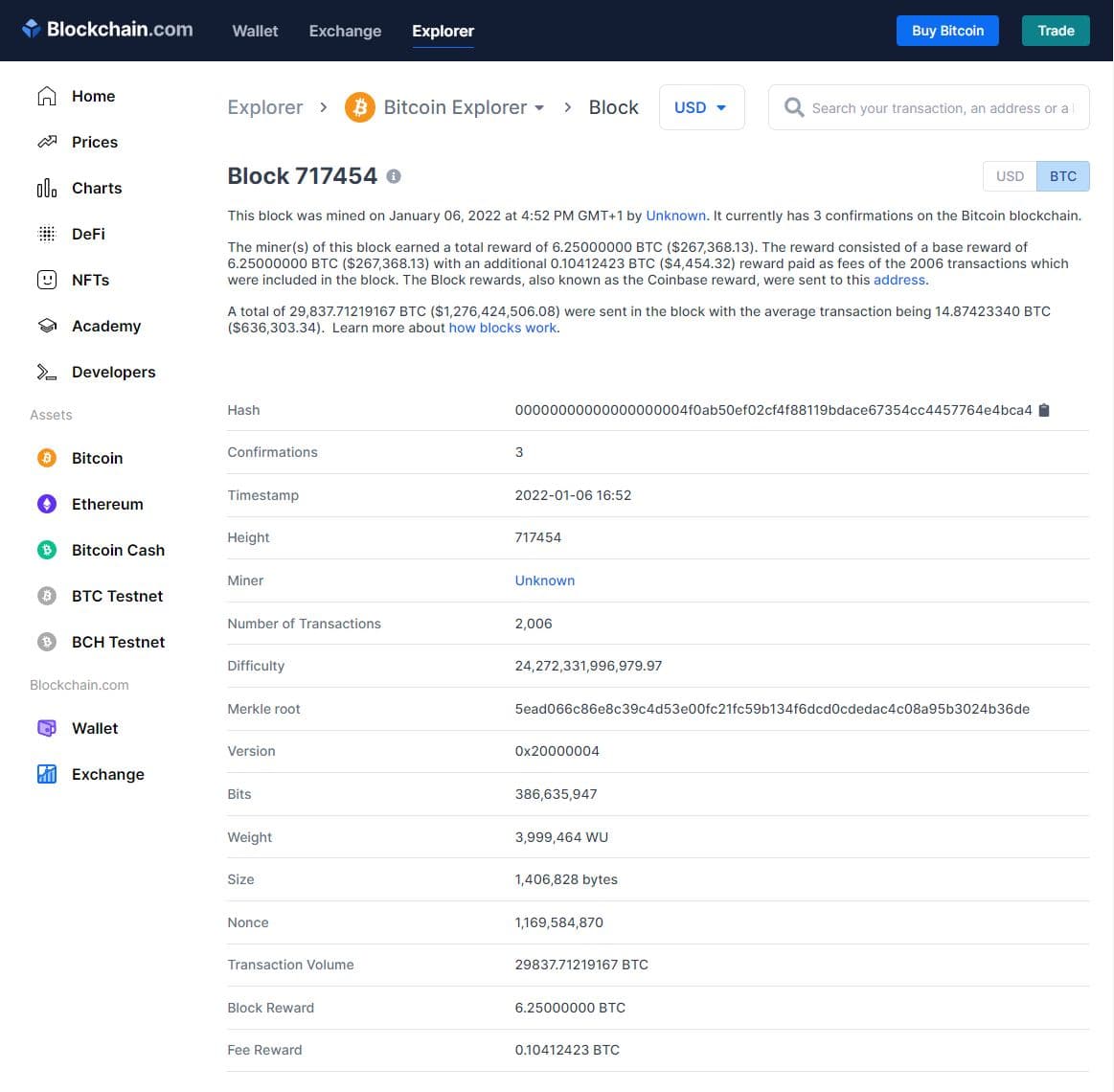
What is a blockchain explorer?
Read on to learn what a blockchain explorer is and what you can use it for. You will also find a list of different blockchain explorers here.
What is a blockchain explorer?
A blockchain explorer is a platform that allows you to explore the activity and information on any given blockchain. A lot of information is freely available and you can use information for all sorts of purposes.
Just sent crypto to your crypto wallet and are wondering about the status of your transaction?
Great, you can easily go and check the status.
Want to find out what transaction costs are on the Ethereum network right now?
Great, you can go and check out the price live.
Reading statistics on network activity? Looking for information on a new coin? Looking for trends? All of this is available on a block explorer.

What’s great about blockchain is that there’s loads of information out there which everyone can enjoy. If you compare this to several of the older, more traditional systems we have, you’ll see that things are much more closed off.
Wondering how blockchain technology works? Click here to learn more
Examples of blockchain explorers
There are many different blockchain explorers. If you want to check out Bitcoin, for example, you can go to https://www.blockchain.com/explorer or https://btc.com/en. Here, you can find information about blocks, transactions, miners and much more. They also have information on Ethereum and other coins.
For Ethereum, perhaps the most popular solution is Etherscan - https://etherscan.io/
If you do a little research, you’ll see that all the established blockchains have their own block explorers. You can use these to follow the activity on the blockchain and to check up on your own transactions.
- Binance smart chain - https://bscscan.com/
- Phantom - https://ftmscan.com/
- Solana - https://solscan.io/
- Avalanche - https://avascan.info/
- Polkadot & Kusama - https://polkascan.io/
- XRP https://xrpscan.com/
The challenge with block explorers is that you need to know a bit about blockchain and crypto in order to get any real benefit from the information available. What today’s “hashrate” is might not be all that interesting for the average user, but it’s still good to know that it’s available to anyone who needs this information.
When you trade on an exchange, like Firi, you don’t have to give this sort of thing too much thought. But if you’re going to be sending your money to a wallet so that you can buy NFTs, for example, then it can sometimes be useful. For beginners, it can be useful and educational to be able to look at their transactions and understand what is going on.
Learn more about crypto here.
How to use a blockchain explorer:
Here, we’ll look at a transaction from etherscan.io

At the top we will find “Transaction Hash” which identifies the transaction. Status indicates whether the transaction is “Pending”, “Failed” or “Success”. Next, we see which block the transaction is on and the time of the transaction.
In the “From” field, we can see the ethereum address that performed the transaction. This belongs to an ethereum wallet, but the person who owns it is anonymous. What we can see, however, is that this wallet has transferred 286.38 LRC (Loopring Coin) worth $598.54 to this wallet from another address, while the “transaction fee” and “gas price” below provide information on transaction costs.
Here is another example where you can click on the individual blocks with a blockchain explorer for Bitcoin. This site has loads of data on bitcoin blocks such as the transactions they include, the time and how much the miners earned from mining this block.

We hope this article was helpful. If you want to learn more about blockchain technology, click here
